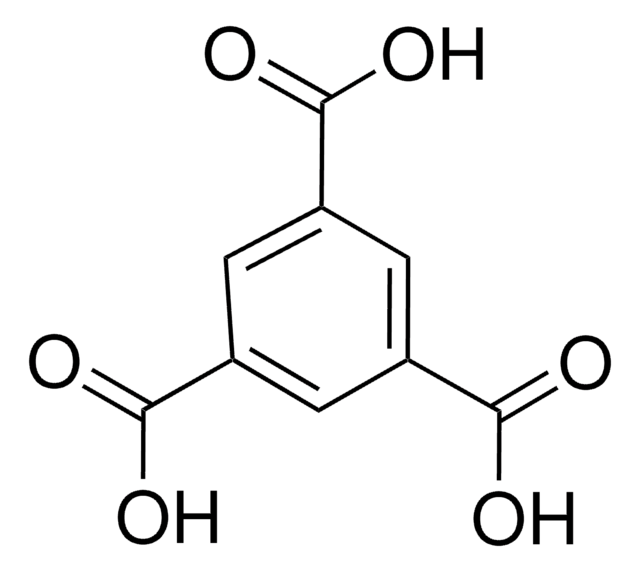369489
Titanium
foil, thickness 2.0 mm, 99.7% trace metals basis
Sign Into View Organizational & Contract Pricing
All Photos(1)
About This Item
Empirical Formula (Hill Notation):
Ti
CAS Number:
Molecular Weight:
47.87
EC Number:
MDL number:
UNSPSC Code:
12141746
PubChem Substance ID:
NACRES:
NA.23
Recommended Products
Quality Level
Assay
99.7% trace metals basis
form
foil
autoignition temp.
860 °F
resistivity
42.0 μΩ-cm, 20°C
thickness
2.0 mm
bp
3287 °C (lit.)
mp
1660 °C (lit.)
density
4.5 g/mL at 25 °C (lit.)
application(s)
battery manufacturing
SMILES string
[Ti]
InChI
1S/Ti
InChI key
RTAQQCXQSZGOHL-UHFFFAOYSA-N
Related Categories
Quantity
22.5 g = 50 × 50 mm; 90 g = 100 × 100 mm; 200 g = 150 × 150 mm
Storage Class Code
13 - Non Combustible Solids
WGK
nwg
Flash Point(F)
Not applicable
Flash Point(C)
Not applicable
Personal Protective Equipment
dust mask type N95 (US), Eyeshields, Gloves
Choose from one of the most recent versions:
Already Own This Product?
Find documentation for the products that you have recently purchased in the Document Library.
Customers Also Viewed
A Kurbad et al.
International journal of computerized dentistry, 16(2), 125-141 (2013-08-13)
This article presents two novel options for lithium-disilicate restorations supported by single-tooth implants. By using a Ti-Base connector, hybrid abutments and hybrid abutment crowns can be fabricated for different implant systems. The latter option in particular is an interesting new
J H Kim et al.
Journal of nanoscience and nanotechnology, 13(7), 4601-4607 (2013-08-02)
Nanocytalline TiN films were deposited on non-alkali glass and Al substrates by reactive DC magnetron sputtering (DCMS) with an electromagnetic field system (EMF). The microstructure and corrosion resistance of the TiN-coated Al substrates were estimated by X-ray diffraction (XRD), scanning
Jinho Shin et al.
Journal of nanoscience and nanotechnology, 13(8), 5807-5810 (2013-07-26)
In this study, hydroxyapatite (HA) was coated on anodized titanium (Ti) surfaces through radio frequency magnetron sputtering in order to improve biological response of the titanium surface. All the samples were blasted with resorbable blasting media (RBM). RBM-blasted Ti surface
B Subramanian
Journal of nanoscience and nanotechnology, 13(7), 4565-4572 (2013-08-02)
Titanium nitride (TiN)/niobium nitride (NbN) nanostructured multilayer coatings were prepared by DC reactive magnetron sputtering method using the combination of a titanium and niobium target and an Ar-N2 mixture discharge gas on to 316L stainless steel substrates. The coatings showed
R Khataee et al.
Journal of nanoscience and nanotechnology, 13(7), 5109-5114 (2013-08-02)
In the present study, self-cleaning and mechanical properties of white Portland cement by addition of commercial available TiO2 nanoparticles with the average particle size of 80 nm were investigated. X-ray diffraction (XRD), transmission electron microscopy (TEM) and BET were used
Our team of scientists has experience in all areas of research including Life Science, Material Science, Chemical Synthesis, Chromatography, Analytical and many others.
Contact Technical Service



